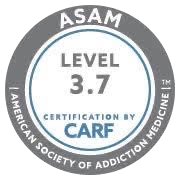What Is Percocet?
Percocet is a brand-name version of the combination of oxycodone and acetaminophen often prescribed to treat pain. Oxycodone is an opioid that can relieve pain, while acetaminophen is an analgesic that can relieve pain and reduce fevers.
Generic Names and Other Brand Names
The generic name for Percocet is oxycodone-acetaminophen. Percocet is just one of the several brand names for oxycodone-acetaminophen. Some common brand names include:
- Endocet
- Narvox
- Roxicet
- Roxilox
Common Street Names
Percocet, along with its generic and other brand names, is also referred to by the common street names of:
- Percs
- Roxy
- Hillbilly Heroin
- O.C.
- Oxycet
- Oxycontin
- Oxy
Percocet vs. Norco
Both Percocet and Norco are opioid medications used to relieve pain. Doctors often prescribe these medications when over-the-counter or non-opioid pain medications are not working to relieve the pain. Both Percocet and Norco are Schedule II semi-synthetic drugs, meaning they have a high potential for abuse and physical and psychological dependence.
There are just a few differences between Percocet and Norco. The first major difference is what they are made of—Percocet is a combination of oxycodone and acetaminophen, while Norco is a combination of hydrocodone and acetaminophen. Furthermore, Percocet is more likely to cause constipation, while Norco is more likely to cause tiredness.
Signs and Symptoms of Percocet Addiction
Prescription opioids remain a commonly administered drug type, reaching 142 million prescriptions in 2020. While this number has decreased compared to previous years, opioids’ highly addictive quality leaves plenty of concern for addiction and dependence.
In fact, approximately 2.7 million people aged twelve and older in the United States have a prescription opioid use disorder. The potential for Percocet addiction can increase based on how long and how often the medication is taken.
Physical Signs
The physical signs and symptoms of Percocet addiction can include:
- Exhibiting symptoms of withdrawal when not taking the medication
- Decreased heart rate
- Slowed speech
- Weight loss
- Fatigue
- Problems with balance
- Constipation
- Shallow breathing
Behavioral Signs
Common behavioral signs that may be exhibited with Percocet addiction include:
- Attempting to borrow or steal Percocet
- Consistently borrowing or stealing money
- Social withdrawal or isolation
- Taking more significant amounts of Percocet over longer periods of time
- Continuing to use Percocet despite its negative consequences
Psychological Signs
Psychological signs and symptoms of Percocet addiction can include:
- Mood swings
- Anger or aggression
- Irritability
- Difficulty concentrating
- Poor memory
- Depression
- Runny nose and watery eyes
- Increased anxiety and restlessness
- Irritability or mood swings
- Increased pain
- Chills or sweats
- Nausea, vomiting, or diarrhea
- Muscle cramps or joint aches
- Headache
- Tremors or shaking
- Rapid heart rate
- Blood pressure changes
- Difficulty sleeping
- Thoughts of suicide
Long-term alcohol abuse can damage the musculoskeletal system leading to a higher likelihood of fractures, osteoporosis, and chronic joint pain.
Factors That Determine How Long Percocet Stays in Your System
 Determining how long Percocet will last in your system is typically based on half-life. However, there are many factors that may determine the length of time Percocet stays in the body. These determining factors may be:
Determining how long Percocet will last in your system is typically based on half-life. However, there are many factors that may determine the length of time Percocet stays in the body. These determining factors may be:
Type of Drug and the Drug’s Half-Life
Different opioids have different half-lives, meaning medications can be detected at varying times depending on how quickly it can be metabolized in the body. For example, some opioids are long-acting, and some are short-acting.
Percocet is a long-acting opioid with an average half-life of three and a half hours. This means it may take an average, healthy individual nineteen to twenty-four hours for it to be eliminated from the system.
Method of Use
How long Percocet stays in your system can also be determined by the method of use. Using the drug intravenously can be metabolized faster than taking it orally; however, this method can result in a higher risk of overdose or contracting a disease.
Amount of Drug
The higher the Percocet dose, the longer the time for it to exit the system.
Body Mass
Typically, the larger the body mass, the longer it will take for the Percocet to be eliminated from the body.
Metabolic Rate
Similarly to body mass, metabolic rate can determine how slowly or quickly the Percocet stays in your system. A quicker metabolism usually means the drug will be processed out of the body more quickly.
Kidney or Liver Function
People with impaired liver or kidney functioning may take longer to metabolize opioids.
Percocet Side Effects
Using Percocet can have many different physical and psychological side effects. These will be detailed below.
Short-Term Percocet Side Effects
Common short-term Percocet side effects may include:
- Nausea or vomiting
- Dizziness
- Constipation
- Low blood pressure
- Loss of appetite
- Shallow breathing
- Drowsiness
Long-Term Percocet Side Effects
Although Percocet was originally intended for short-term use, there are cases where some doctors continue prescribing this medication for longer periods or people continue to take Percocet without a written prescription (e.g., obtaining the drug illegally, using someone else’s prescription).
Long-term side effects of prolonged Percocet use can include:
- Kidney failure
- Liver damage
- Severe constipation
- Physical and psychological dependence
- Tolerance
- Urinary retention
Effects of Percocet Overdose
The risk of overdose from Percocet can come from both oxycodone and acetaminophen. People currently prescribed Percocet should avoid taking other medications with acetaminophen without their doctor’s approval. Those who feel Percocet is no longer providing pain relief should not increase their dose without discussing it with their medical provider.
Aside from the risk of addiction, overdose is another severe and life-threatening side effect of opioids. Overdosing on Percocet can cause irreversible damage to the liver and even death. In 2020, overdose deaths caused by synthetic opioids like Percocet reached 56,516.
Additional Indications of Percocet Overdose
Some other symptoms of Percocet overdose to look out for are:
- Blue color of skin, fingernails, or lips
- Difficulty breathing
- Dizziness
- Excessive sleepiness
- Fainting
- Cold, clammy skin
- Slowed or stopped breathing
- Loss of consciousness
- Limp or weak muscles
If you experience any of these symptoms, contact emergency services immediately before symptoms progress.
Symptoms of Percocet Withdrawal
Regardless of whether a person has developed a Percocet addiction or is taking Percocet as prescribed, suddenly stopping the medication after prolonged use may cause withdrawal symptoms. Withdrawal symptoms can vary depending on the duration, frequency, and amount of Percocet use. The common signs and symptoms of withdrawal include:
How Long Does Percocet Stay in Your System?
As previously mentioned, Percocet usually stays in the system between nineteen to twenty-four hours after the last use. Nevertheless, it can still be detected in hair, urine, and saliva for a longer period of time.
- Hair follicle: Percocet can be detected in hair follicles for up to ninety days after the last use.
- Blood: The drug can be detected in blood for up to twenty-four hours after the last use.
- Saliva: Percocet can be detected in saliva for one to four days after the last use.
- Urine: In urine, Percocet can be detected three to four days after the last use.
Percocet Detection Test
Percocet drug tests involve using various drug testing techniques to determine the presence of the drug in the body. Drug tests include urine, blood, saliva, and hair follicle testing.
- Urine Testing: Urine tests are the most commonly used form of drug testing. This often involves providing a urine sample to a medical professional to test for the presence of the drug. Percocet will continue to be detected in your urine between three to four days after the last use.
- Hair Follicle Testing: Hair follicle testing involves collecting around one hundred hairs from the top of the head. Washing, dying, or altering hair in any way will not affect the test. Once the hairs are collected, they are sent to a drug-testing laboratory. Percocet can be detected for up to ninety days within the hair.
- Blood Testing: Blood tests involve collecting a blood sample using a small needle in the vein of an arm or hand. Percocet will continue to show in the blood for up to twenty-four hours after the last use.
- Saliva Testing: Saliva testing involves placing a swab or absorbent pad inside the cheek or under the tongue to collect saliva. Percocet can be detected in the saliva for one to four days after the last use.
Treatment for Percocet Addiction
Treatment options for Percocet addiction and abuse typically include detox, inpatient rehabilitation, medication-assisted treatment (MAT), and therapy. A medical professional will work closely with the individual to determine the best course of treatment.
Detox
Detox can be done through inpatient and outpatient programs. Inpatient detox involves staying in a facility to be medically monitored by nurses, physicians, and other staff. It also consists in attending group therapy treatment to learn healthy coping skills.
A Percocet detox through an outpatient program is less structured, as it does not require patients to stay at the facility. It is often best practice to contact a medical provider for medications to assist with alleviating withdrawal symptoms.
Medication-Assisted Treatment
Medication-assisted treatment, or MAT, is often used to help alleviate withdrawal and cravings. 30.5% of individuals with a substance use disorder received MAT for opioid use in 2020.
Commonly, doctors prescribe buprenorphine (Suboxone or Subutex) for opioid dependence. Other medications for Percocet addiction and dependence may include Naltrexone and methadone. These medications block the effects of opioids and help to reduce cravings.
Therapies
Therapy is also an effective way to help treat addiction and mental health conditions. Many treatment programs use a combination of individual, group, and family therapies for the best results.
Get Treatment at San Diego Detox
If you or someone you love is struggling with an addiction or mental health condition, San Diego Detox may be the program for you. San Diego Detox offers a variety of treatment options, including:
- Medication-assisted treatment
- Psychiatric care and therapy services
- Inpatient residential treatment programs
- Outpatient treatment programs
Reach Out Today
San Diego Detox understands that every case is different, and everyone responds to treatment differently. Therefore, we create individualized treatment programs that address the needs, experiences, and expectations of each person to ensure they receive the best treatment possible. For more information about our program options, contact San Diego Detox today.







